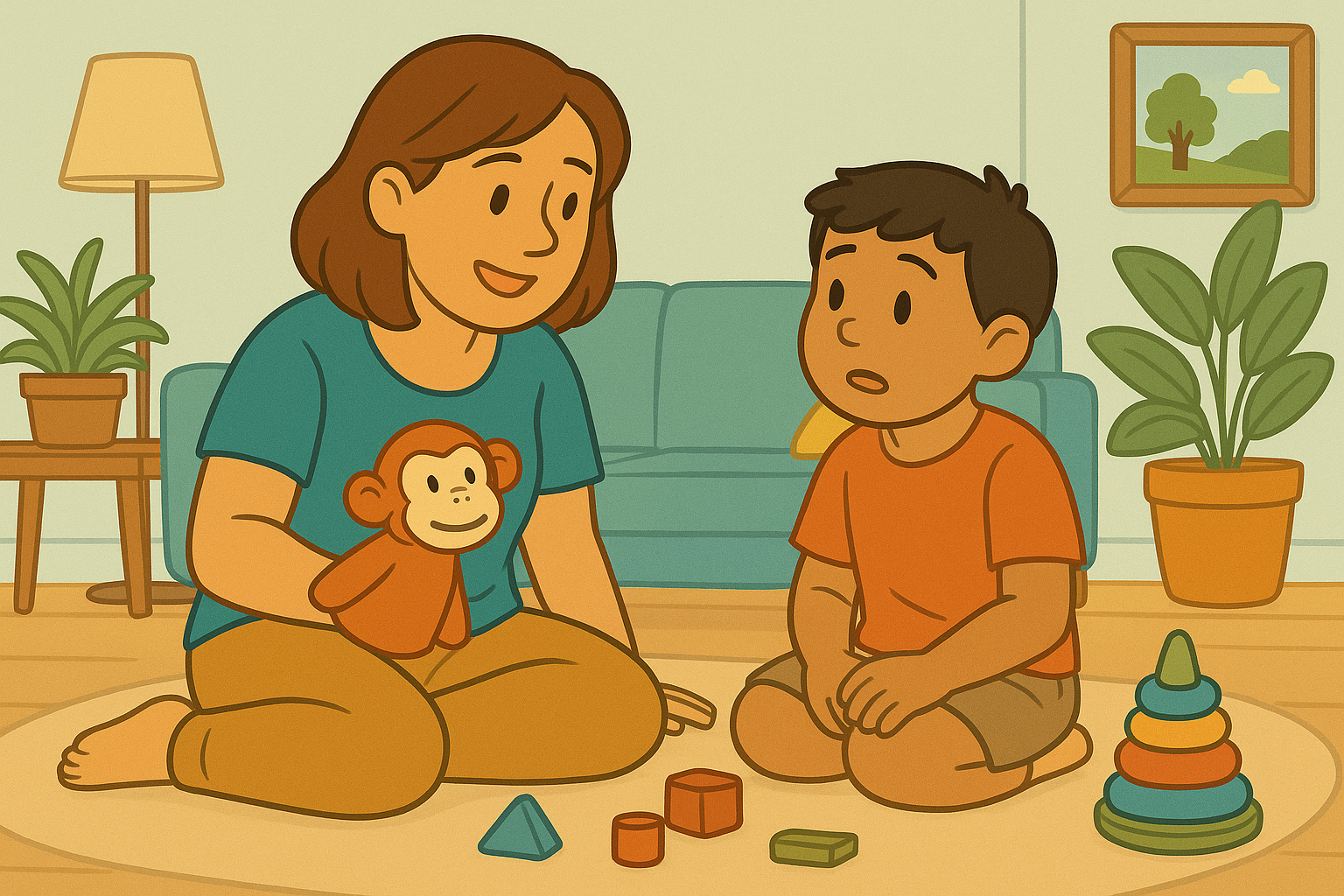Encouraging Self-Reflection Through Questions
Encouraging Self-Reflection Through Questions
The Power of Asking, Not Telling
When children misbehave or make mistakes, adults often rush to explain, correct, or lecture. But one of the most effective tools in positive discipline isn’t telling — it’s asking.
Thoughtful questions help children pause, think about their actions, and make connections between choices and outcomes. This process — called self-reflection — turns discipline from external control into internal growth.
When kids learn to reflect instead of react, they begin to take genuine responsibility for their behavior.
Why Reflection Builds Responsibility
Children don’t automatically know how to learn from their mistakes. Their brains are still developing impulse control and cause-and-effect reasoning. Asking reflective questions activates those thinking skills.
When a parent asks, “What do you think happened there?” or “How could we handle that differently next time?” it engages the child’s problem-solving brain instead of triggering shame or defensiveness.
This approach nurtures emotional maturity and critical thinking — traits that last far beyond childhood.
It connects closely to Helping Kids Learn Accountability Without Shame, where responsibility grows from understanding, not punishment.
The Difference Between Reflection and Guilt
Reflection asks, “What can I learn?” Guilt says, “I’m bad.” The first leads to growth, the second to avoidance.
When questions are asked with empathy and curiosity, they invite the child to think without fear.
Instead of “Why did you do that?” — which sounds accusatory — try, “What were you hoping would happen?” This simple shift changes tone from interrogation to exploration.
The goal is to help kids see mistakes as teachers, not enemies.
Timing Matters: Wait for Calm
Self-reflection doesn’t happen during a meltdown. When emotions run high, logic shuts off. The first step is always calm.
Once your child feels safe again, you can gently ask reflective questions. That’s when insight can surface.
You might start with, “Now that we’re both calm, can we talk about what happened?”
This mirrors Reconnecting After Big Emotions, where reconnection creates the safety children need to think clearly again.
Start With Observations, Not Accusations
Children listen best when they don’t feel blamed. Try opening with neutral observations:
“I noticed you got upset when it was time to turn off the tablet.”
“It seemed like your friend felt sad after that.”
Then ask an open question: “What do you think was going on there?”
This approach encourages perspective-taking — a key part of emotional intelligence.
It also aligns with Understanding Behavior as a Form of Communication, which teaches that every action reveals a need or feeling underneath.
Guiding Questions to Spark Insight
You can use reflection questions in almost any situation — conflict, frustration, or success. Examples include:
“How did that feel?”
“What made it hard to stop?”
“What could you try next time?”
“What do you think would help you remember?”
“What can we do to make it right?”
Questions like these help children practice emotional literacy, empathy, and accountability all at once.
Keep them simple and conversational — curiosity, not correction, is the key.
Using Play and Story to Encourage Reflection
Children process life best through play. Use stories, puppets, or role play to explore feelings and decisions safely.
For example, you might act out a scenario with puppets: one grabs a toy without asking, the other gets upset. Then ask, “What do you think they could do next?”
This indirect reflection feels lighter for young kids, but the learning runs deep.
It builds on Using Puppet Shows to Model Apologies and Forgiveness, where imaginative storytelling helps children explore complex emotions with comfort and understanding.
Modeling Reflection Yourself
The most powerful lessons come from what children see. When you model reflection out loud, you teach them that growth is part of being human.
Say, “I was short with you earlier because I felt rushed. Next time, I’ll try to take a deep breath first.”
This shows that reflection isn’t about blame — it’s about awareness and repair.
When parents model humility and growth, children internalize both.
Creating a “Reflection Routine” at Home
Make reflection part of daily life, not just discipline. Try short conversations at bedtime, after school, or during dinner. Ask:
“What was something that went really well today?”
“What was tricky?”
“What did you learn from it?”
When reflection becomes routine, kids develop lifelong habits of mindfulness and accountability.
This daily rhythm connects naturally with Creating Behavior Routines That Stick, where repetition and predictability strengthen emotional learning.
When Kids Resist Questions
Sometimes children aren’t ready to reflect — especially if they still feel defensive or embarrassed. That’s okay.
Don’t push. Instead, focus on calm presence and reconnection. You might say, “That was a hard moment. When you’re ready, we can talk about it.”
Reflection requires emotional safety. When children trust that your questions come from love, not judgment, they open up naturally.
Turning Reflection Into Growth
Asking good questions doesn’t just shape behavior — it shapes identity. Children who reflect learn that mistakes are manageable, relationships can repair, and learning never stops.
Over time, they internalize the process: pause, think, choose. That’s the essence of self-control and empathy.
When parents guide with curiosity instead of control, kids grow up not just behaving well — but thinking well.
Because true discipline isn’t about having the right answers. It’s about raising kids who know how to ask the right questions.
This content is for educational purposes and is not a substitute for professional medical or psychological advice.
Popular Parenting Articles


